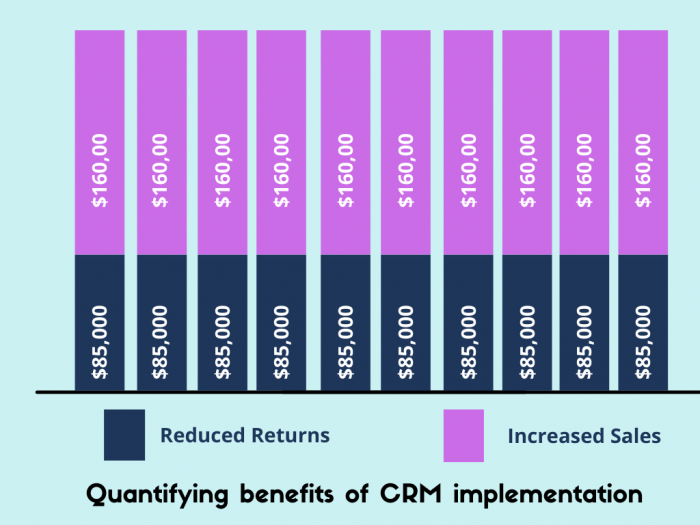Many business owners and CXOs wish to budget for their IT initiatives. In this article, we will be exploring one such approach keeping in mind a CRM implementation case on hand.
So let’s get on with it.
Analyzing CRM implementation as a CAPEX
In business lingo, implementing a CRM solution is a capital expense. A capital expense (or CAPEX) is spent on assets or services to improve the business. Strictly as per definition, this CAPEX must be on something that the company is going to be using more than a year. Usually IT solutions last much longer and hence fit into this category.
While deciding on a CAPEX, the company must undertake a financial analysis. This includes taking into account the net cash flow generated across the years and discounting them to the net present value.
Quantifying the return on investment of a CRM solution
A customer relationship management solution, just like any other IT solution, aims at solving business problems. CRM packages, like Salesforce, have in-built Sales, Marketing and support modules.
Features related to Sales help users to generate revenue in a streamlined fashion by enabling reps with underlying customer, product, prices information along with on the fly quote PDF generation. This coupled up with solutions like CPQ can really help configure the right product configuration needed by the customers.
Service module can help streamline the customer support function whereas marketing aims at generating more prospect ensuring repeat purchase, less returns and greater average life time value per customer.
Marketing helps you track your spending and measure the revenue generated across each channel (like Print, Trade Shows, Online Campaigns and more).
Knowing what your expectations are from a CRM solution, you need to guesstimate the benefits. The case study below shows exactly how to do the same.
Sample case study
Let us say ABC Inc sells high end gaming laptops. It promises a 30 days return with no questions asked. The company identifies that it needs to do better managing customer requests.
Let us say that following are the key figures. An average laptop costs $2,500 and the product margin on the same is $800. The company sells 10,000 laptops a year. Approximately 8% of laptops are returned in the first 30 days. Reverse logistics costs $50 for handling returns and related warehouse operations.
One of ABC’s key expectation from CRM, is to provide better technical support to customers. By answering their questions using self help portal and reducing their wait times over call, ABC expects to reduce the returns by 1%. This, too, without increasing the headcount in customer support call center.
From the above, we can estimate that annual revenue loss of $250,000 / net margin $80,000 erosion would be eliminated.
Also the return logistics worth $5,000 per year will be saved. The total annual savings of $85,000 will be achieved.
Assuming that CRM solution will be leveraged for 10 years, the net present value of the investment will be $689,000 (with interest rate of 5%). See how net present value can be calculated.
The company also expects to increase sales by 2% due to CRM implementation. This means additional margin of $160,000. The net present value of this comes out to be $1,297,000.
Let us say that budget for CRM implementation is pegged at $100,000. Thus in other words, with an investment of $100,000, the company expects to gain a returns worth $1,987,000.

Source – Author’s own creation
Factoring in the OPEX part of CRM implementation
There is a simplification in the above calculation. Companies incur license and maintenance cost. These are paid on a yearly basis.
In other words, the net benefits calculated above doesn’t take these recurring cost. Assuming this cost to be $25,000 per year, the net benefit works out to be $225,000 per year for the next 10 years. The net present value for the same is around $1,824,000. Not bad at all, right?
CRM versus Spreadsheet approach
You may be wondering, in spite of such strong business proposition, why do so many companies still manage customer information either in spreadsheets or only back end financial applications?
In my experience, the following are the key reasons for the same.
Every project needs an anchor within the organization and support from higher management. They need to understand the intrinsic value of implementing a CRM solution.
Before you start with the project, I suggest taking detailed survey of customer facing functions to identify their pain points. Finalize a CRM champion across the organization who will lead the discovery phase.
– CRM packages are made keeping a generic company in mind. Mapping the processes in CRM is a key activity which shows the benefits CRM can bring. This needs to be done in details or else it leads to iteration.
– One key aspect to note is that software implementation needs to bring in new efficiencies. But one has to keep an eye for such opportunities. For example, building email templates within CRM could save effort while responding to customers.
Instead of considering it from an IT dominant point of view, it is required to consider CRM initiatives from a business strategy point of view as well. Some of the points mentioned above need a highly qualified customer experience professional to lead the assignment. As an alternate, the organization has to hire experienced consultant well versed in multiple CRM platforms.
Conclusion
CRM project needs ownership and complete accountability throughout the process for it to be successful. this CRM implementation guide talks about how businesses can identify the KPIs, form a team and develop CRM in line with the company’s objective.
Customer Relationship Management Systems (CRM) are wonderful in aiding the growth of a business or company. They help businesses by managing who a business is working with and how. With an intelligent CRM in place, companies or businesses can expect to see increased workflow efficiency and profitability.



